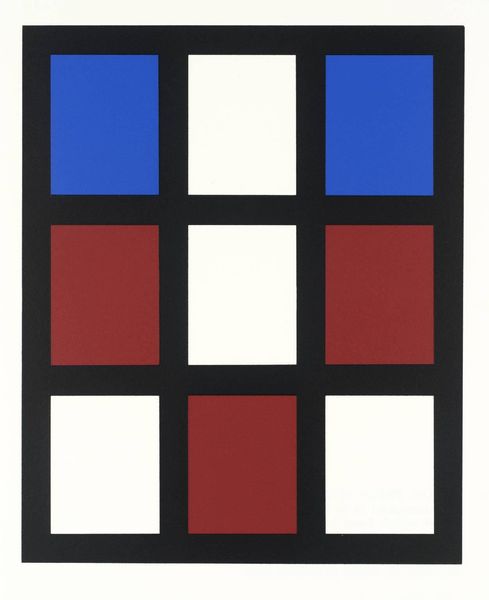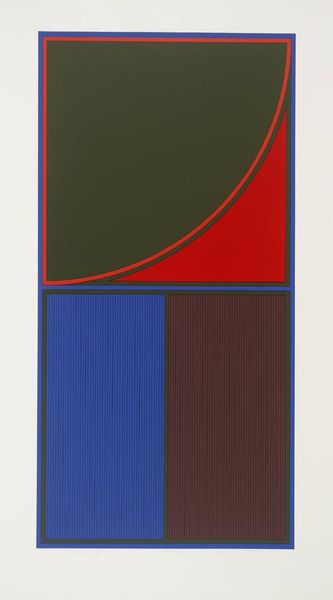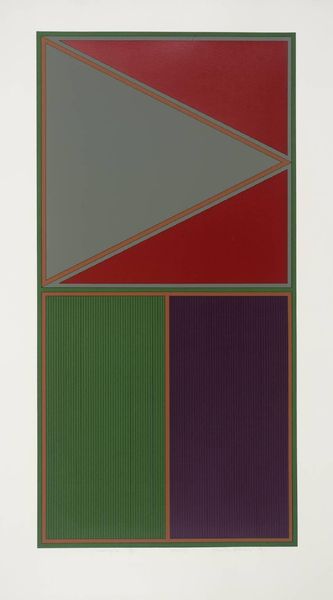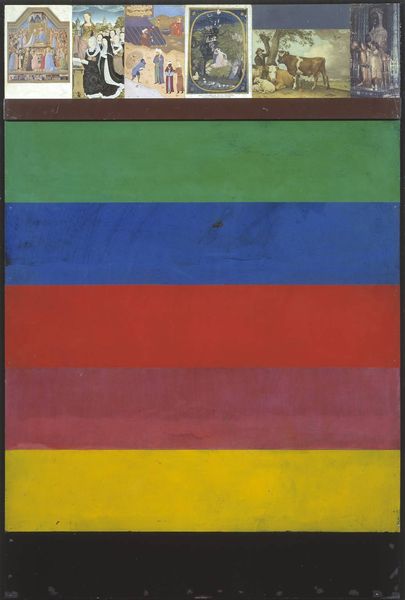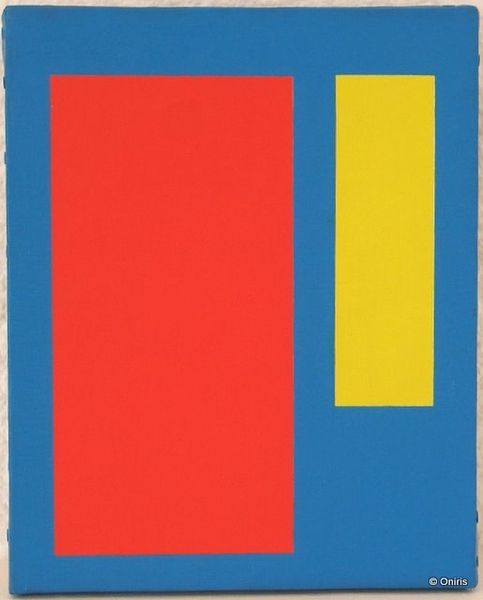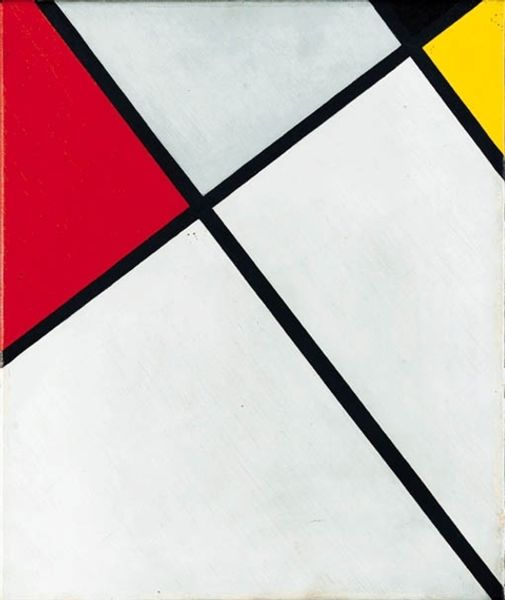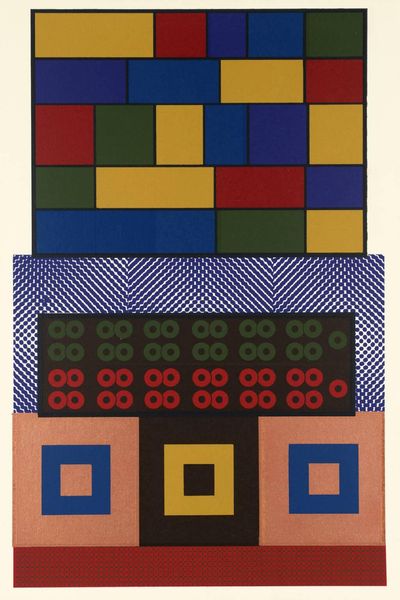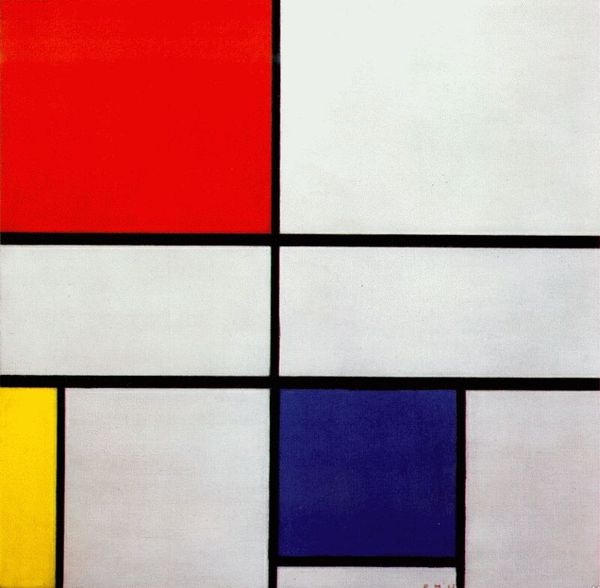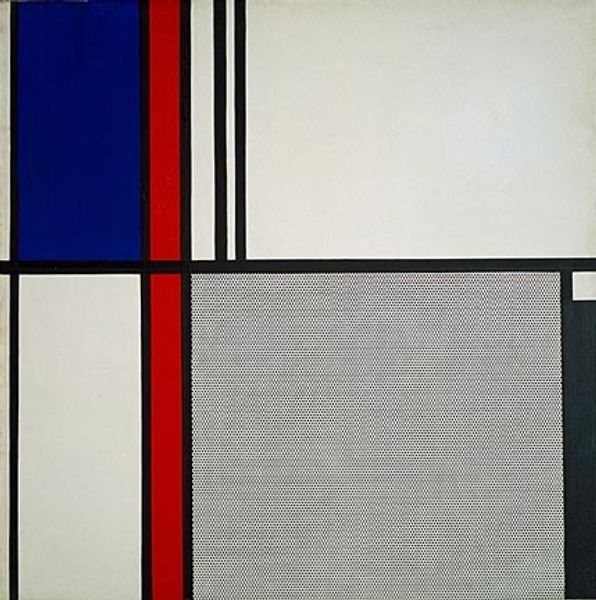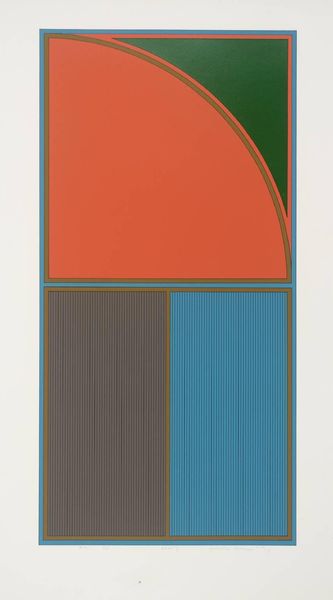
painting, acrylic-paint
#
abstract-expressionism
#
neo-plasticism
#
painting
#
acrylic-paint
#
form
#
geometric pattern
#
geometric
#
geometric-abstraction
#
abstraction
#
line
#
modernism
Copyright: Roy Lichtenstein,Fair Use
Editor: This is Roy Lichtenstein's "Non Objective I," painted in 1964, using acrylic. It really reminds me of Mondrian's work with its grid and primary colors. What's your take on this piece? Curator: I see a fascinating interplay of production and consumption here. Lichtenstein, known for his commentary on mass culture, uses the visual language of Neo-Plasticism, pioneered by Mondrian, but applies his signature Ben-Day dots. Consider the irony: mechanical reproduction simulating an aesthetic supposedly about pure form. Editor: So, it's not just about the surface; it's about how it was made? Curator: Precisely. Look closely at the Ben-Day dots. They mimic the printing process of comics, blurring the line between high art and industrial production. Think about the acrylic paint itself, a relatively new material in 1964, chosen for its fast-drying, consistent color, and suitability for this kind of precise execution. Does that suggest anything about the artist’s priorities? Editor: It sounds like he’s deliberately drawing attention to the process and materials rather than aiming for some kind of emotional expression. He's highlighting the constructed nature of the image. Curator: Exactly. It begs the question: what happens when we commodify even the most "pure" and "objective" forms of art? It’s a commentary on art’s place within a growing consumer culture. Editor: That makes a lot of sense. I didn't really consider how the materials themselves contribute to that commentary. Curator: By looking at the means of production, we see Lichtenstein cleverly interrogates the relationship between art, commerce, and the viewer's expectations. Editor: That’s given me a completely new perspective. Thanks, I will now question everything I see. Curator: As you should. Considering materiality always yields a deeper understanding.
Comments
No comments
Be the first to comment and join the conversation on the ultimate creative platform.
